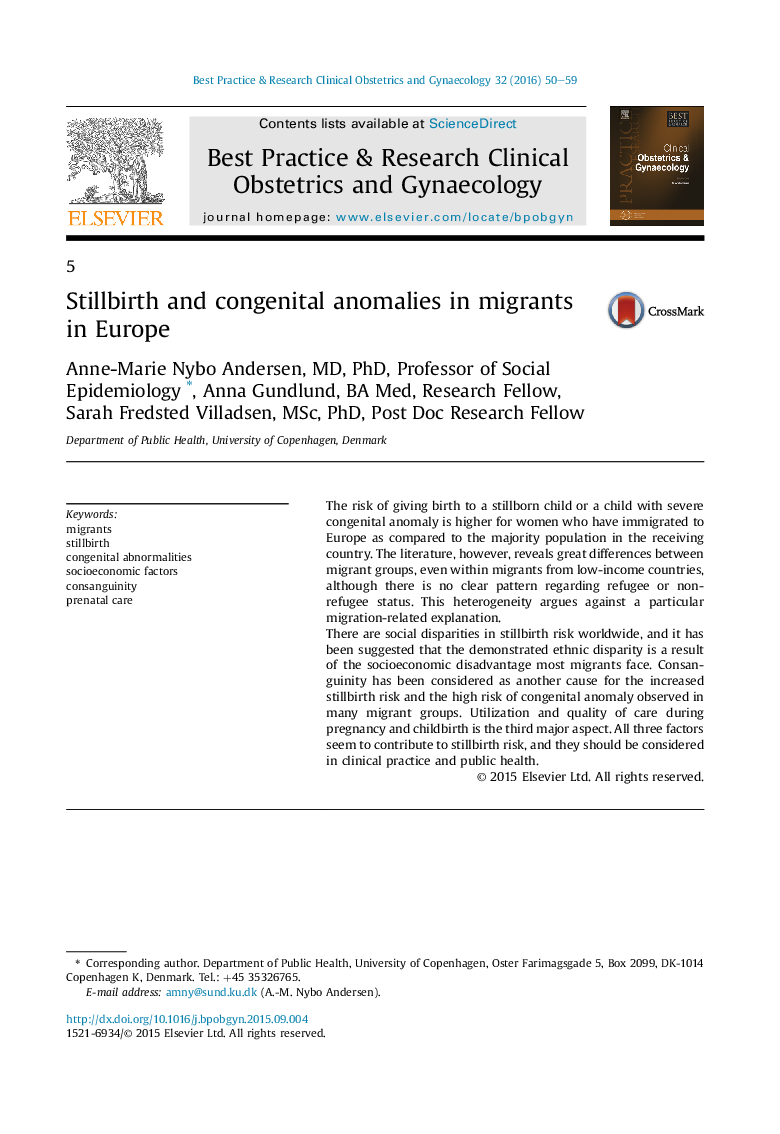| کد مقاله | کد نشریه | سال انتشار | مقاله انگلیسی | نسخه تمام متن |
|---|---|---|---|---|
| 6169164 | 1599308 | 2016 | 10 صفحه PDF | دانلود رایگان |
- Pregnant women in Europe with a migrant background are at a higher risk of giving birth to a stillborn child or a child with a congenital anomaly than indigenous women are. The heterogeneity in risk between different migrant groups points toward mechanisms beyond migration per se and socioeconomy.
- In order to reduce the risk of stillbirth and having a child with a congenital anomaly for all women, we need to gain insight into the mechanisms that create the disparities, and we need to study both migrant groups with adverse and favorable reproductive health outcomes.
- Currently, the risk factor profile for stillbirth and congenital anomalies differs between different ethnic groups, and the antenatal and birth care systems need to consider this when evaluating the risk for an individual woman.
- Specific risk factors for migrant women including adverse socioeconomic position, consanguinity, emotional strain due to isolation, and hostility or discrimination, and, in the case of refugees, posttraumatic stress disorder (PTSD) victims in the household have to be considered.
- For public health and the health-care system, efforts to start antenatal care at an early stage, provision of early prenatal screening for congenital anomalies, information to young people about risk factors for stillbirth and congenital anomalies, including prepregnancy folic acid supplementation and consanguinity, are essential, along with improvement in health literacy for women and professionals in antenatal and perinatal care.
The risk of giving birth to a stillborn child or a child with severe congenital anomaly is higher for women who have immigrated to Europe as compared to the majority population in the receiving country. The literature, however, reveals great differences between migrant groups, even within migrants from low-income countries, although there is no clear pattern regarding refugee or non-refugee status. This heterogeneity argues against a particular migration-related explanation.There are social disparities in stillbirth risk worldwide, and it has been suggested that the demonstrated ethnic disparity is a result of the socioeconomic disadvantage most migrants face. Consanguinity has been considered as another cause for the increased stillbirth risk and the high risk of congenital anomaly observed in many migrant groups. Utilization and quality of care during pregnancy and childbirth is the third major aspect. All three factors seem to contribute to stillbirth risk, and they should be considered in clinical practice and public health.
Journal: Best Practice & Research Clinical Obstetrics & Gynaecology - Volume 32, April 2016, Pages 50-59
